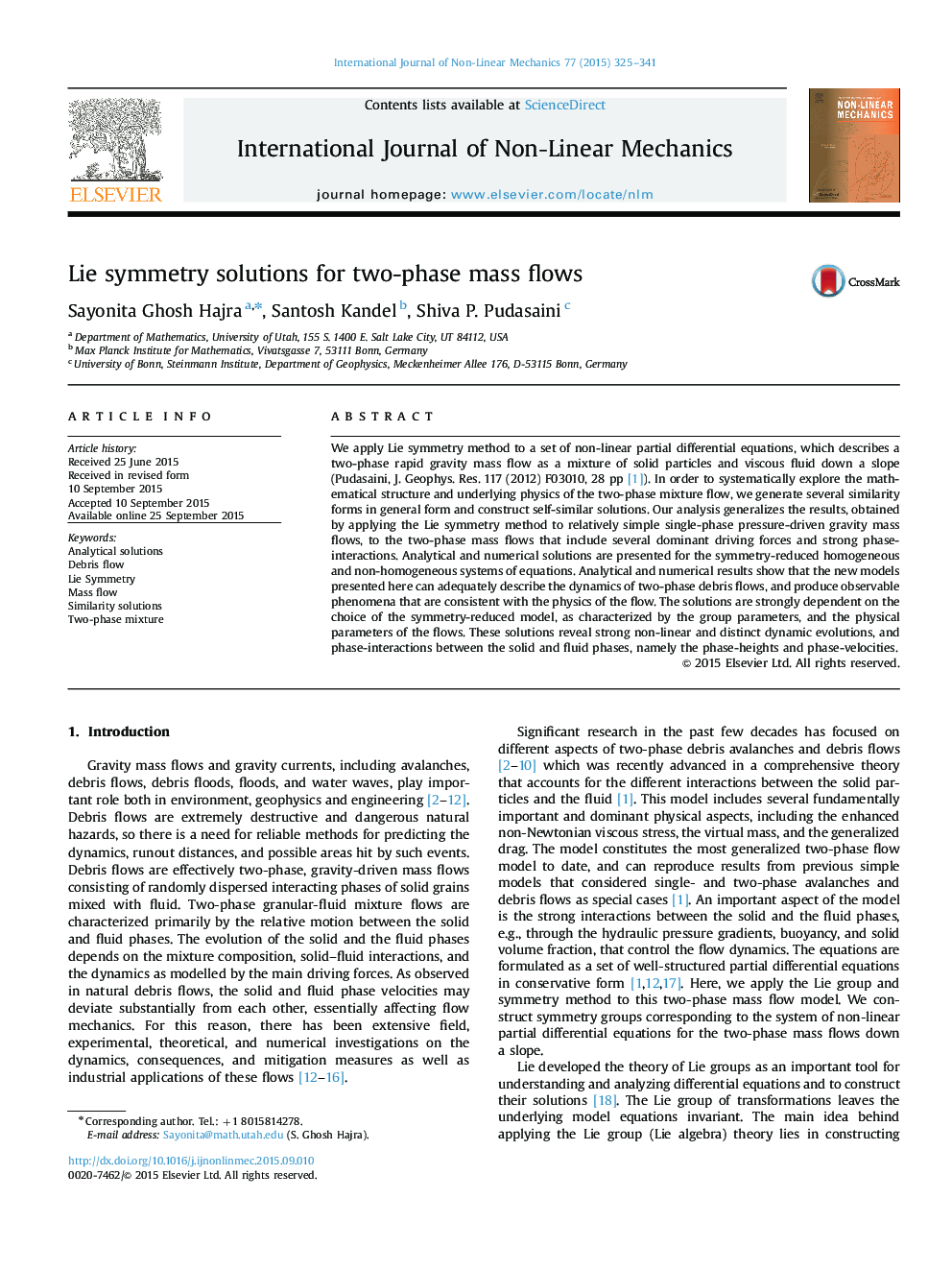| Article ID | Journal | Published Year | Pages | File Type |
|---|---|---|---|---|
| 783463 | International Journal of Non-Linear Mechanics | 2015 | 17 Pages |
•We apply Lie symmetry to non-linear PDEs describing two-phase mass flows.•Result generalizes two-phase flow with dominant strong phase-interaction.•Several general similarity forms are generated to construct self-similar solutions.•Analytical, numerical solutions presented for symmetry-reduced system.•New models adequately describe two-phase debris flows and produce observable phenomena.
We apply Lie symmetry method to a set of non-linear partial differential equations, which describes a two-phase rapid gravity mass flow as a mixture of solid particles and viscous fluid down a slope (Pudasaini, J. Geophys. Res. 117 (2012) F03010, 28 pp [1]). In order to systematically explore the mathematical structure and underlying physics of the two-phase mixture flow, we generate several similarity forms in general form and construct self-similar solutions. Our analysis generalizes the results, obtained by applying the Lie symmetry method to relatively simple single-phase pressure-driven gravity mass flows, to the two-phase mass flows that include several dominant driving forces and strong phase-interactions. Analytical and numerical solutions are presented for the symmetry-reduced homogeneous and non-homogeneous systems of equations. Analytical and numerical results show that the new models presented here can adequately describe the dynamics of two-phase debris flows, and produce observable phenomena that are consistent with the physics of the flow. The solutions are strongly dependent on the choice of the symmetry-reduced model, as characterized by the group parameters, and the physical parameters of the flows. These solutions reveal strong non-linear and distinct dynamic evolutions, and phase-interactions between the solid and fluid phases, namely the phase-heights and phase-velocities.
